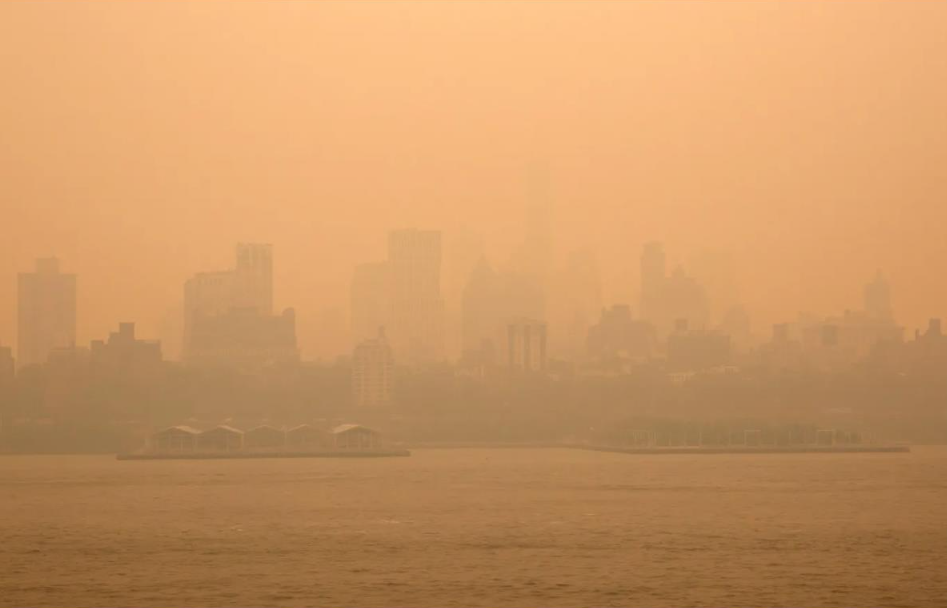
The Air Out There – Not the Zombie Apocalypse but Very Dangerous
This week, much of the country is seeing a plunge in air quality that is causing pandemic era stay-at- home orders, event cancellations, and a run on N95 masks (doesn’t everyone have leftovers?). In New York, and other parts of the Northeast, the bad air is being caused by wildfires in Canada. New York is suffering from its worst air quality in at least 40 years, including 9/11 (although some of the particles in the air from 9/11 were more toxic), and the air is so red, New York looks a bit like Mars.

While Canada’s Quebec wildfires were unexpected, California’s wildfire season is on its way and will undoubtedly affect areas of the country who have escaped this week’s misery. So, let’s look at why air quality matters, and how to protect yourself from the long-term effects of living through a bad air spell.
What Does the Air Quality Index (AQI) Measure?
Air quality is measured with the Air Quality Index, or AQI. The AQI works like a thermometer that runs from 0 to 500 degrees. However, instead of showing changes in temperature, the AQI indicates changes in the amount of five main pollutants in the air.
• Ground-level ozone
• Particle pollution (also known as particulate matter, including PM2.5 and PM10)
• Carbon monoxide
• Sulfur dioxide
• Nitrogen dioxide
All of these pollutants are harmful to breathe in. And like everything else, bad air affects the most sensitive, or vulnerable among us most. That’s why the EPA created a color-coded warning system so that we know where we stand on the AQI scale at any given moment.

If you have a weather app or widget on your smartphone, chances are you can easily find out what the air quality is in your area. The CDC also suggests AirNow which is a free app and email alert system.

Why is it Important to Monitor Air Quality?
Bad air quality doesn’t always announce itself in an overt way, but that doesn’t mean that it is not harmful. Polluted air can cause difficulty breathing, allergy flare-ups, trigger asthma, and other lung problems. Bad air can cause spectacular headaches because it triggers certain neurons in your brain and can create disorientation, thanks to lower oxygen levels. Long-term exposure to air pollution can raise the risk of other diseases, including heart disease and cancer because the particles you breathe in can turn up in your blood stream causing inflammation, which underlies many diseases.
So, What Should You Do About It?
Before bad air strikes (sorry, New York), you can prepare for it:
• Stock up on N95 or KN95 masks, they are the only ones that protect you from small pollution particles.
• Invest in an air purifier with a HEPA filter, if you have underlying pulmonary issues, like asthma or COPD (and make sure you have a working oximeter on hand).
• Make sure your air conditioning filters are clean and that your air conditioners can be set to recirculate air.
• Buy that ceiling fan you’ve always wanted.
When your air quality is hazardous:
• Do not exercise outside.
• Keep your windows closed.
• Wear a medical grade mask, even if you didn’t during the height of the pandemic.
• Monitor for any adverse symptoms.
• Circulate the air in your home with fans.
Finally, doctors warn against stressing out over air that appears murky and other-worldly. Apparently, anxiety exacerbates all the adverse symptoms of bad air and can even cause a few. So, get prepared and rest easy knowing that you have what you need to live through the hazardous haze.